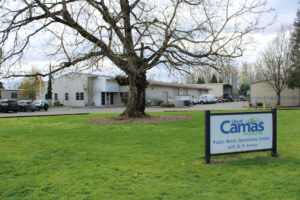It has been almost one year since Camas leaders commissioned an independent review of city employee salaries and city councilors are expected to come to a resolution regarding retroactive salary increases for non-represented employees in early October.
But some officials — including Camas Mayor Scott Higgins — believe the process has dragged on too long.
“I believe the longer this goes without resolution, the worse this is for our city,” Higgins said at a Camas City Council work session in early September. “For our employees, this has been hard … and if we could have been done by now, it would (have been) better.”
Higgins added that this is the first time in 20 years the city has gone through such an exhaustive review of city employee salaries, and said he did believe city councilors were close to agreeing on revamped salary ranges for the city’s union and non-represented employees.
City administrators are using the independent salary review, presented to the city council in July by consultants HR Answers, as a “starting point” for current collective bargaining negotiations with Camas’ union-represented employees, but city councilors have debated the study’s updated salary ranges for non-union employees.



